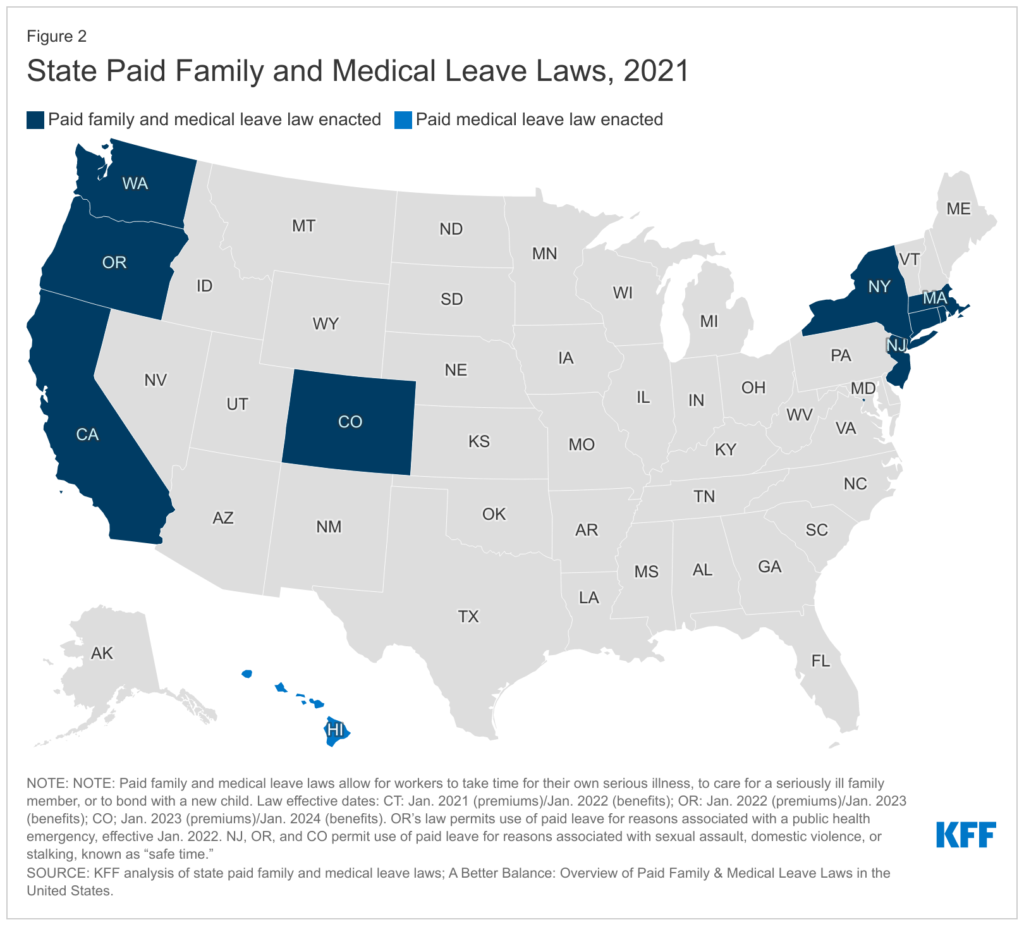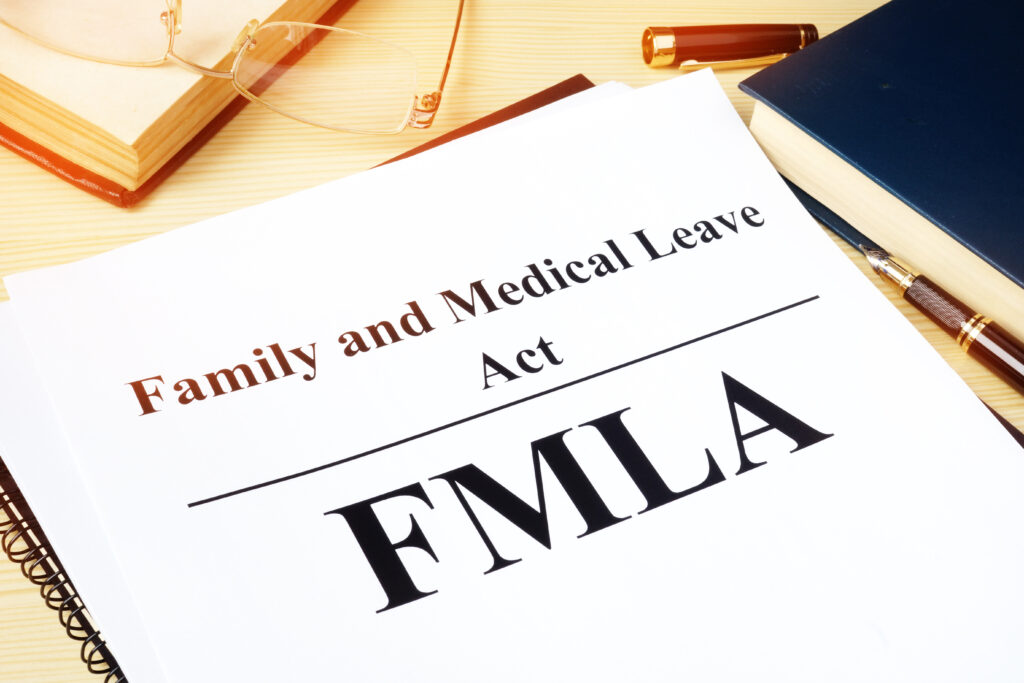Currently, there is no national requirement for employers to offer paid sick leave to their employees. However, in reality, even without a legal obligation to provide paid leave, in the private sector, 73% of full-time US workers have an arrangement with their employer to provide paid time off in the event of sickness.
What is the difference between FMLA and PFL?
FMLA is a federal law defining employee rights required of some employers to provide unpaid medical leave.
PFL policies are state-paid regulations that vary from state to state and supersede federal law when the benefits are more generous than the national regulation, FMLA.
While FMLA and PFL are similar, they are not the same. Below we outline the basic characteristics of each.
Family Medical Leave Act
In 1993, the US enacted the FMLA as the first measure to give workers protection from job loss.
The US government wrote the legislation primarily for a pregnant employee to be able to receive time off for having a baby, or for employees who need extended time off for a serious health condition.
FMLA is also designed to help employees balance their work and family responsibilities by allowing them to take reasonable unpaid leave for certain family and medical reasons. It seeks to accommodate the legitimate interests of employers and promote equal employment opportunities for men and women.
FMLA applies to all public agencies, all public and private elementary and secondary schools, and companies with 50 or more employees. These employers must provide an eligible employee with up to 12 weeks of unpaid leave each year for any of the following reasons:
- For the birth and care of the newborn child of an employee;
- For placement with the employee of a child for adoption or foster care;
- To care for an immediate family member (i.e., spouse, child, or parent) with a serious health condition; or
- To take medical leave when the employee is unable to work because of a serious health condition.
Employees are eligible for leave if they have worked for their employer at least 12 months, at least 1,250 hours over the past 12 months, and work at a location where the company employs 50 or more employees within 75 miles. Whether an employee has worked the minimum 1,250 hours of service is determined according to FLSA principles for determining compensable hours or work.
Paid Family Leave
The COVID-19 pandemic has underscored the importance of paid family and medical leave for US workers and their loved ones. Because FMLA only covers employees for unpaid leave, many states have taken the initiative to expand access to paid leave in parts of the US employees not covered by these local laws must rely on voluntary employer policies, which can vary considerably.
According to the U.S. Department of Labor’s most recent FMLA survey, based on workers’ experiences in 2018, about half of all leaves workers take each year are for a serious personal medical issue (51%), one-fourth of all leaves are to care for a new child or address pregnancy-related needs (25%), one-fifth (19%) is to care for a seriously ill, injured or disabled parent, spouse or child or due to the deployment of a service member in the family, and 5% are to care for a family member not currently covered by the FMLA (for example, a grandparent, grandchild, sibling or other extended family members).
This proves the value of state-paid family and medical leave programs, which covers a broader range of personal medical and care needs.
Currently, there are nine states, and Washington D.C. that have enacted paid family and medical leave laws. These states administer and fund paid leave through employer and/or employee payroll contributions to allow workers to care for a seriously ill family member or to bond with a new child, and typically provide partial wage replacement up to a designated cap.

The need for leave time will continue, but we know that much of the need for paid leave time will be centered on state and local policies or those voluntarily adopted by employers. Given that most people will need time off during their working lives to care for a personal or family illness, or for a new child, this issue will continue to be a salient concern for working families across the country in the years to come.

